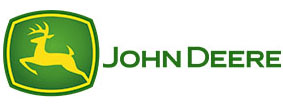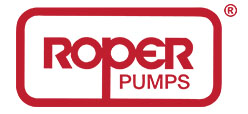Hydrostatic Timber Harvester
Hydrostatic Timeber Harvester
Type of heavy vehicle employed in cut-to-length logging operations for felling, delimbing and bucking trees. A Hydrostatic Timber harvester is typically employed together with a forwarder that hauls the logs to a roadside landing. “Combi” machines are available which combine the felling capability of a Hydrostatic timber harvester with the load-carrying capability of a forwarder, allowing a single operator and machine to fell, process and transport trees. These novel type of vehicles are only competitive in operations with short distances to the landing.
Hydrostatic Harvesters were mainly developed in Sweden and Finland and today do practically all of the commercial felling in these countries. Hydrostatic Timber Harvesters work best in less difficult terrain for clear cutting areas of forest. For very steep hills or for removing individual trees, humans working with chain saws are still preferred in some countries. In the nordic countries small and very agile harvestors are used for thinning operations and manual felling is typically only used in extreme conditions or by self-employed forest owners.
The principle aimed for in mechanised Hydrostatic logging is “no feet on the forest floor”, and the Hydrostatic harvester and forwarder allow this to be achieved. Keeping humans inside the driving cab of the hydrostatic machine provides a safer and more comfortable working environment for industrial scale logging.
The leading manufacturers of Hydrostatic Timber harvesters are Timberjack (owned by John Deere) and Valmet (owned by Komatsu). Hydro-ax,.Franklin ,prentice and Bell
Hydrostatic Timber Harvesters typically are built on a robust all terrain vehicle, either wheeled or tracked. The vehicle may be articulated to provide tight turning around obstacles. A diesel engine provides power for both the vehicle and the harvesting mechanism through hydraulic/ hydrostatic drive. An extensible, articulated boom, similar to that on an excavator, reaches out from the vehicle to carry the Hydrostatic harvester head. In fact, some commercial harvesters are adaptations of excavators with a new harvester head, while others are purpose-built vehicles.
A typical Hydrostatic harvester head may consist of (from bottom to top, with head in vertical position)
- a chain saw to cut the tree at its base, and also cut it to length. The saw is hydraulically powered, rather than using the 2-stroke engine of a portable version. It has a more robust chain, and a higher power output than any saw that can be carried by a human.
- two curved delimbing knives which reach around the trunk to remove branches.
- two feed rollers to grasp the tree. The wheels pivot apart to allow the tree to be embraced by the harvester head, and pivot together to hug the tree tight. The wheels are driven in rotation to force the cut tree stem through the delimbing knives.
- two more curved delimbing knives.
All of this can be controlled by one operator sitting in the cab of the vehicle. A control computer can simplify mechanical movements and can keep records of the length and diameter of trees cut. Length is computed by counting the rotations of the gripping wheels. Diameter is computed from the pivot angle of the gripping wheels when hugging the tree. Length measurement also can be used for automated cutting of the tree into predefined lengths.
Hydrostatic Timber Harvesters are routinely available for cutting trees up to 900 mm in diameter, built on vehicles weighing up to 20 t, with a boom reaching up to 10 m radius. Larger, heavier vehicles do more damage to the forest floor, but a longer reach helps by allowing more trees to be harvested with fewer vehicle movements.
The first single grip harvester hydrostatic head was introduced in the early eighties by Swedish company SP Maskiner.
The approximately equivalent type of vehicle in full-tree logging timber harvesting systems are hydrostatic feller-bunchers.
Hydrostatic Timber Harvester in the Black Forest
HYDROSTATIC/HYDRAULIC REPAIR PARTS – HYDROSTATIC/HYDRAULIC PUMP PARTS – HYDROSTATIC/HYDRAULIC EQUIPMENT PARTS
CALL US FOR YOUR REPAIR ON DIFFICULT TO LOCATE HYDRAULIC TRANSMISSION PUMP MOTOR REPAIR PARTS FOR… MITSUBISHI, KAWASAKI, DAEWOO, DYNAPOWER, LINDE, REXROTH, UCHIDA, YAMAHA, HITACHI, KOMATSU, LIEBHERR, POCLAIN, VOLVO, VICKERS, CESSNA, HYDROMATIK, SUNDSTRAND AND EATON CLOSED LOOP AND OPEN LOOP HYDRAULIC DRIVE PUMPS AND MOTORS PARTS.
Some of the the brands we repair






